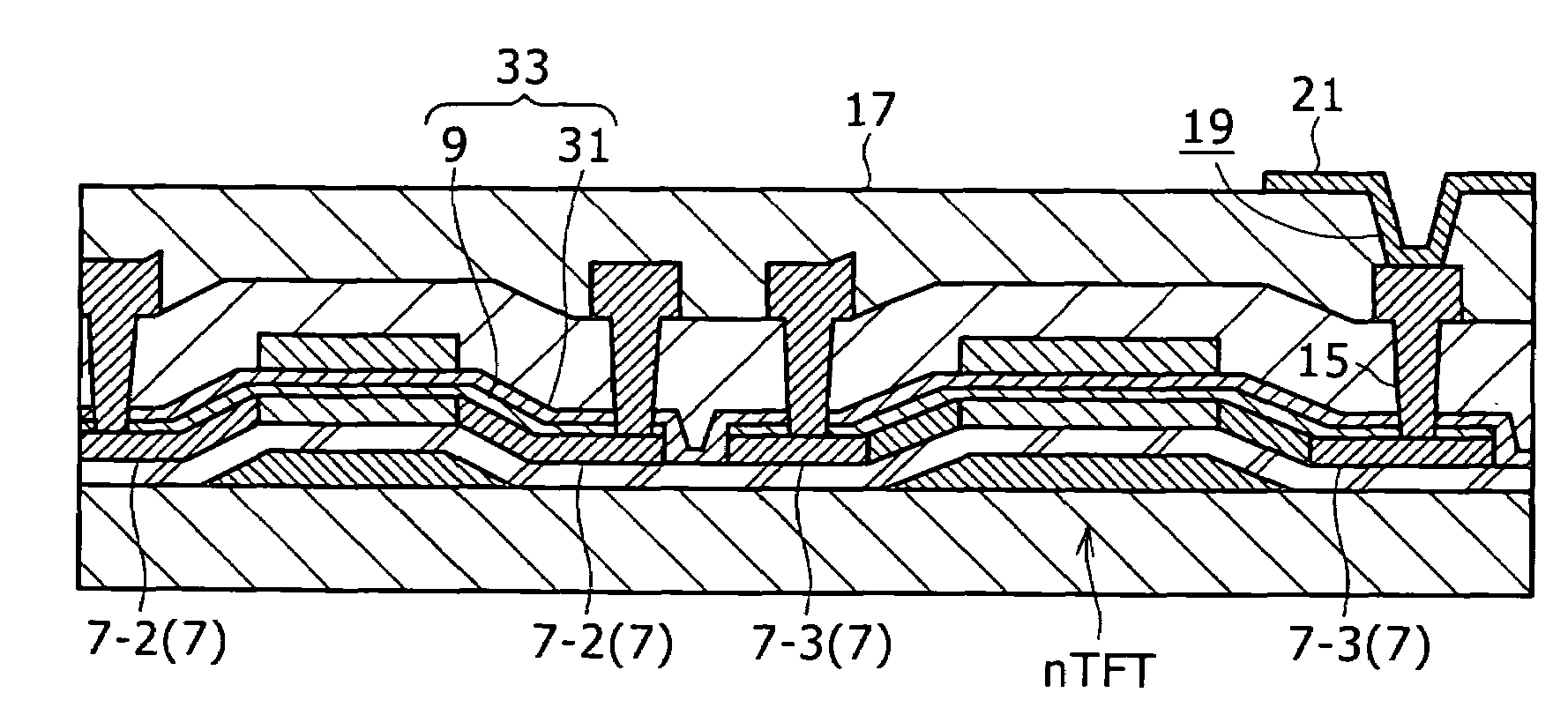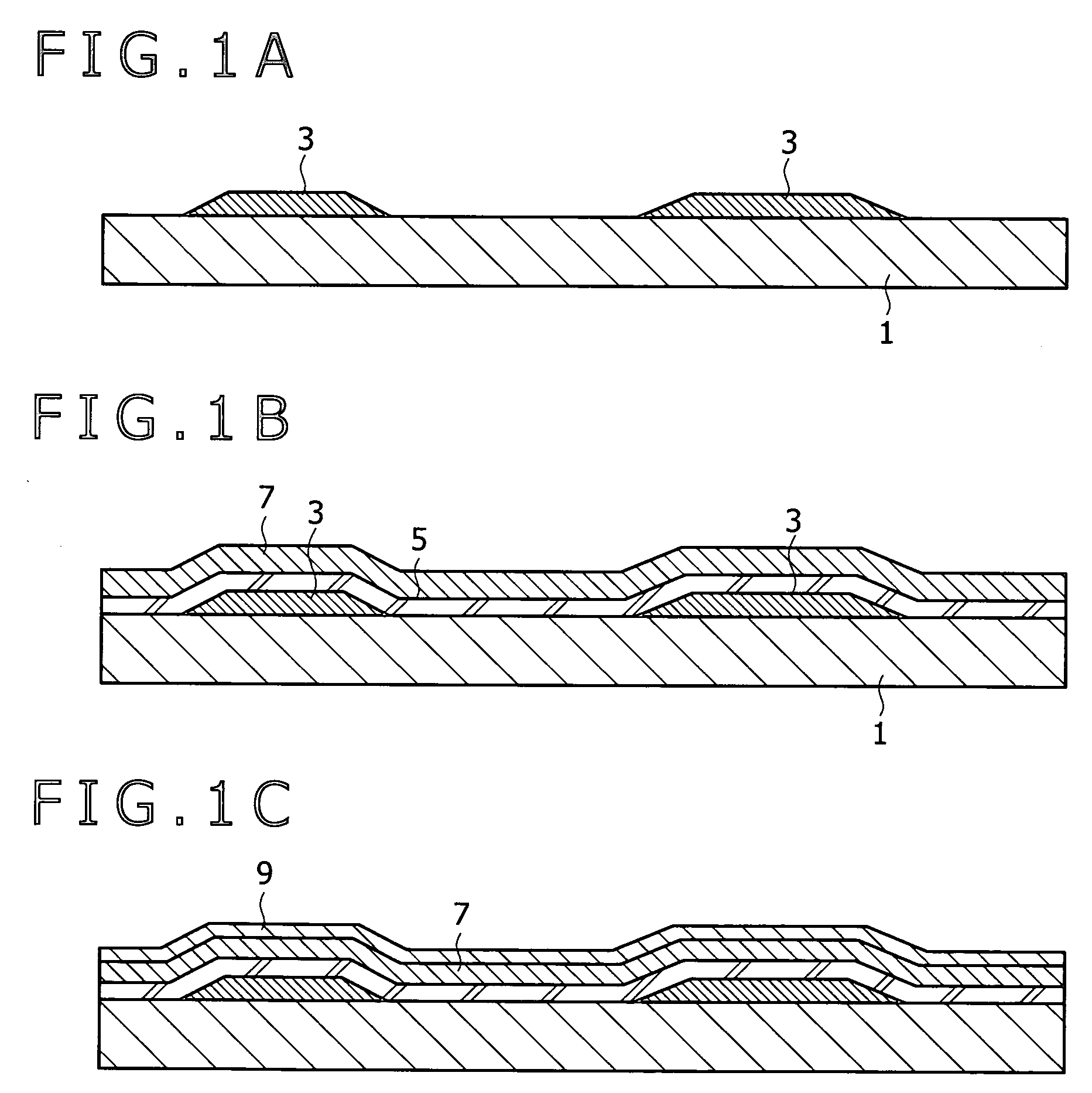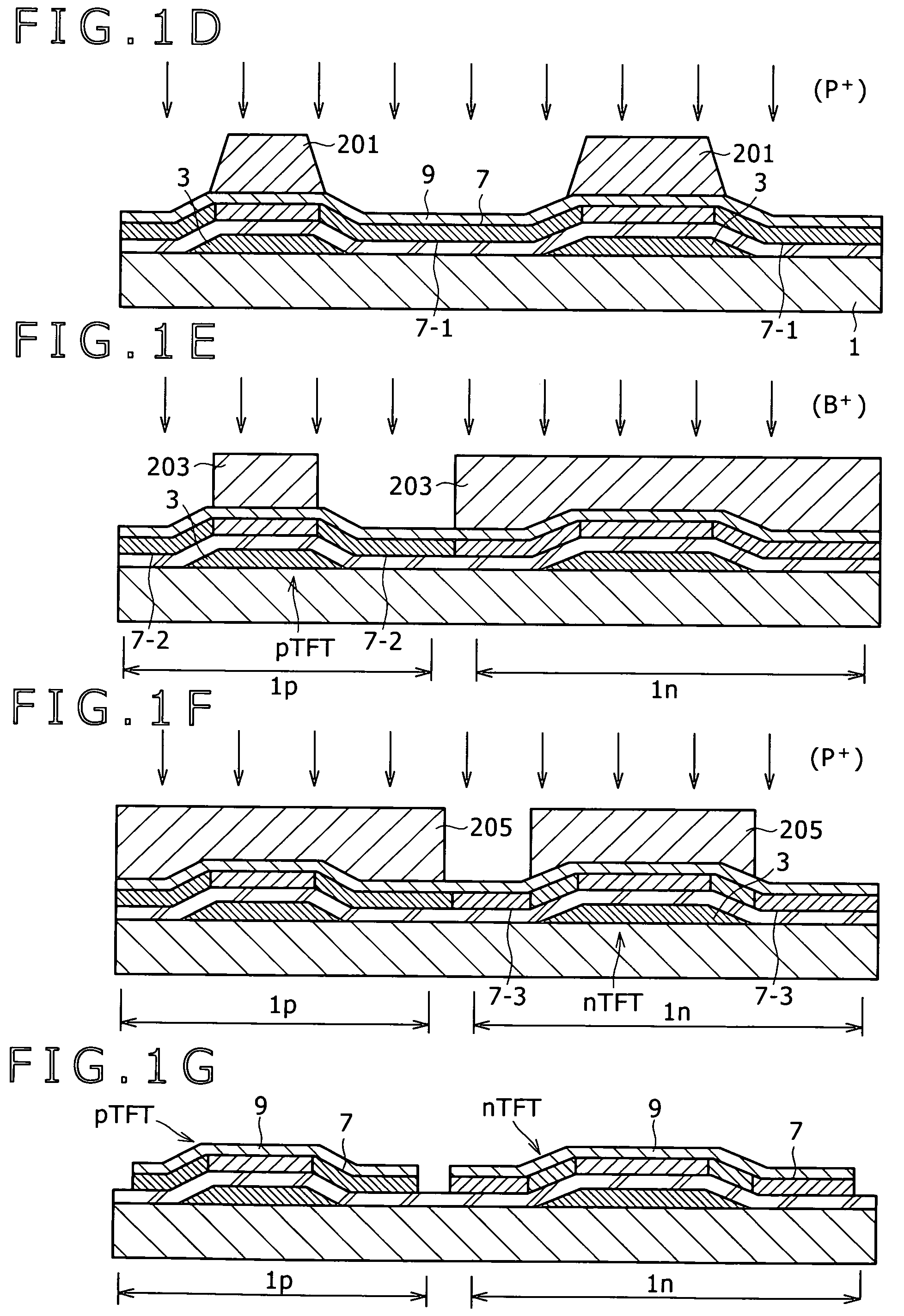Method for production of thin-film semiconductor device
a technology of semiconductor devices and thin films, applied in the direction of semiconductor devices, electrical devices, transistors, etc., can solve the problems of reducing increasing the fixed amount of oxynitride (sion) film, and increasing the vth of tft, so as to reduce the interface state, reduce the fixed charge, and reduce the effect of fixed charg
- Summary
- Abstract
- Description
- Claims
- Application Information
AI Technical Summary
Benefits of technology
Problems solved by technology
Method used
Image
Examples
first embodiment
[0024]FIGS. 1A to 1J are sectional views showing steps in the first embodiment of the method for production of a thin-film semiconductor device according to an embodiment of the present invention. The embodiment mentioned below is intended for the drive panel of the display-unit provided with TFTs of the planar bottom gate type in the form of CMOS.
[0025]The first step, shown in FIG. 1A, starts with getting ready an insulating substrate 1, which may be “AN100” from Asahi Glass CO. LMT. or “Code 1737” from Corning Incorporated, for example.
[0026]The substrate 1 has gate electrodes 3 formed thereon by patterning. The gate electrodes 3 are formed from film of Mo, W, Ta, or Cu by sputtering and ensuing patterning.
[0027]Incidentally, the thickness of the gate electrode (metal film) should be 30 to 200 nm.
[0028]The next step, shown in FIG. 1B, is intended to form a gate insulating film of silicon oxynitride (SiOxNy) 5 (which will be referred to as SiON gate insulating film hereinafter) on ...
second embodiment
[0055]FIGS. 3A to 3F are sectional views showing steps in the second embodiment of the method for production of a thin-film semiconductor device according to the embodiment of the present invention. The embodiment mentioned below is intended for the drive panel of the display unit provided with bottom gate TFTs of channel stop type with the n-channel only.
[0056]The same procedure as mentioned above for the first embodiment with reference to FIGS. 1A to 1C are repeated to cover the gate electrodes 3 on the insulating substrate 1 sequentially with the SiON gate insulating film 5 and the semiconductor thin film 7 and then perform steam annealing under pressure for modification of the SiON gate insulating film 5 and growth of the thermal oxide film 9 on the surface of the semiconductor thin film 7.
[0057]The next step, shown in FIG. 3A, is intended to form a resist pattern 207 which overlaps the gate electrode 3 on the thermal oxide film 9 by back surface exposure through the substrate 1...
third embodiment
[0068]FIGS. 4A to 4E are sectional views showing steps in the third embodiment of the method for production of a thin-film semiconductor device according to the embodiment of the present invention. The embodiment mentioned below is intended for the drive panel of the display unit provided with dual gate TFTs of the CMOS type.
[0069]The same procedure as mentioned above for the first embodiment with reference to FIGS. 1A to 1C is repeated to cover the gate electrodes 3 on the insulating substrate 1 sequentially with the SiON gate insulating film 5 and the semiconductor thin film 7 and then perform steam annealing under pressure for modification of the SiON gate insulating film 5 and growth of the thermal oxide film 9 on the surface of the semiconductor thin film 7. The foregoing steps are followed by the same procedure as described above with reference to FIGS. 1D to 1G, by which both the thermal oxide film 9 and the semiconductor thin film 7 undergo pattern etching so that they are d...
PUM
| Property | Measurement | Unit |
|---|---|---|
| thickness | aaaaa | aaaaa |
| thick | aaaaa | aaaaa |
| thick | aaaaa | aaaaa |
Abstract
Description
Claims
Application Information
 Login to View More
Login to View More - R&D
- Intellectual Property
- Life Sciences
- Materials
- Tech Scout
- Unparalleled Data Quality
- Higher Quality Content
- 60% Fewer Hallucinations
Browse by: Latest US Patents, China's latest patents, Technical Efficacy Thesaurus, Application Domain, Technology Topic, Popular Technical Reports.
© 2025 PatSnap. All rights reserved.Legal|Privacy policy|Modern Slavery Act Transparency Statement|Sitemap|About US| Contact US: help@patsnap.com



